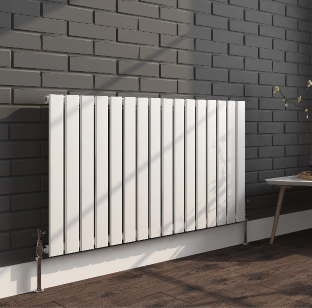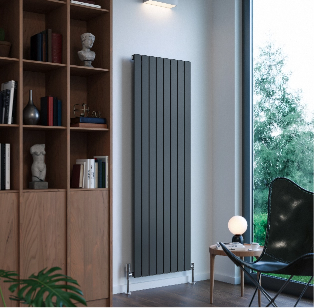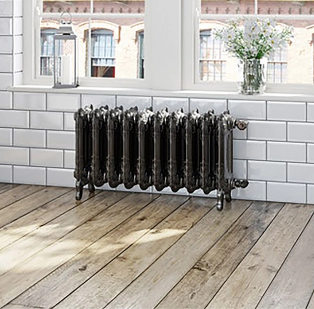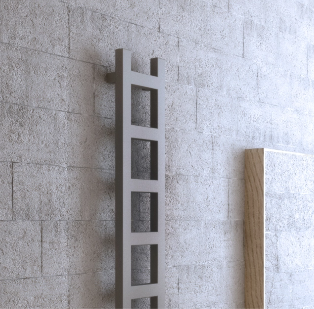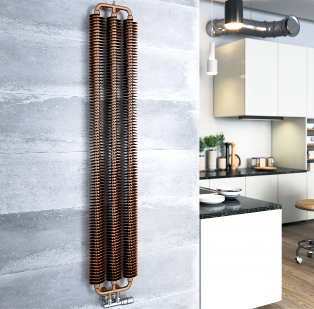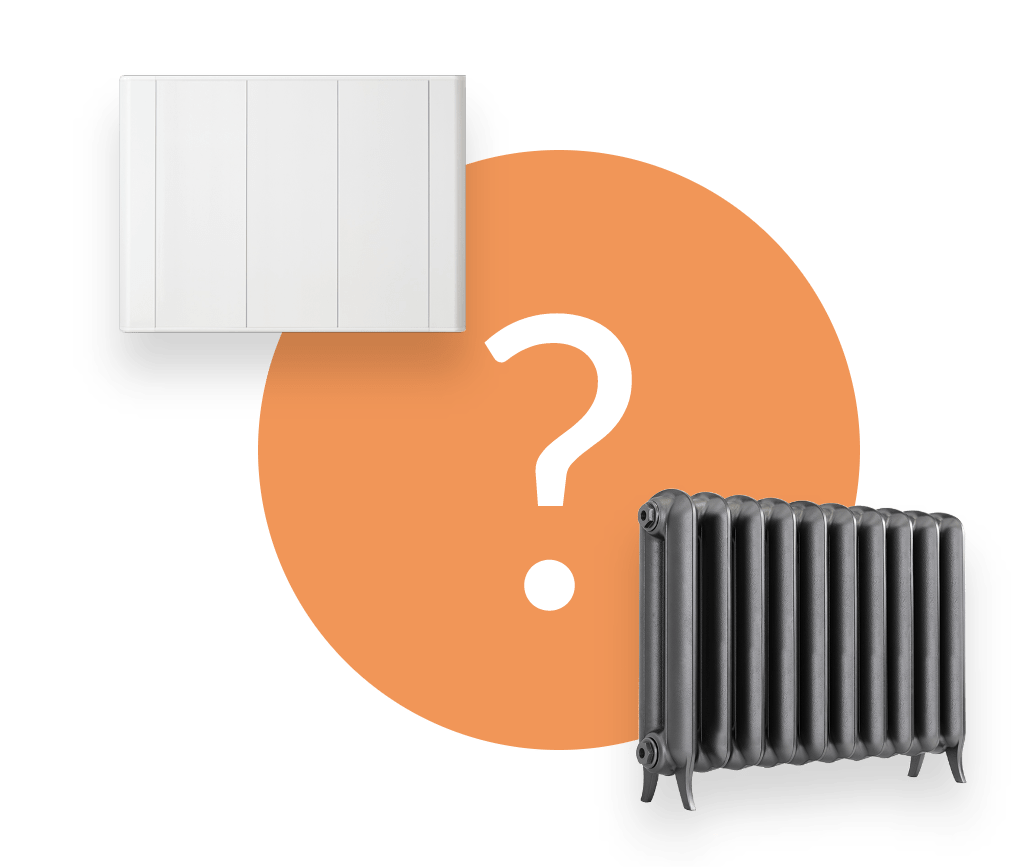
How to Choose The
Perfect Radiator –
A Radiator Buyers Guide
Welcome to the most comprehensive radiator buying guide you’ll ever need! As we go along, you’ll uncover the different types of radiators, their heating mechanisms, and how to choose the perfect one for your space. With this guide, buying a radiator will be as simple as turning a knob!
Read on to find out the answers to these common questions about electric heating:
- Understanding Radiator Heating Solution
- Different Types of Radiators
- How Many and What Size
- Radiators for every room
- What Different Materials Radiators Are Made Of?
- Do I need Valves?
- More FAQs
Don’t see your question here? Try our FAQs.
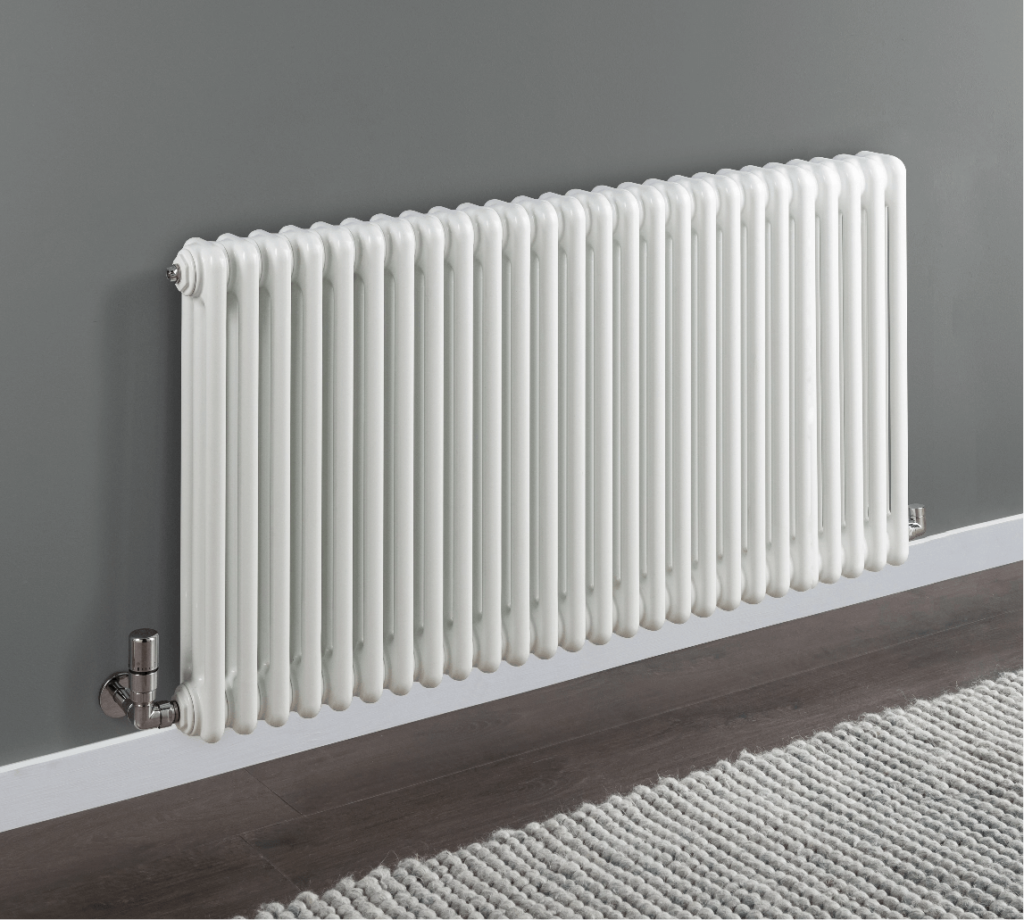
Understanding Radiator Heating Solutions
Radiators can work through a few different heating solutions. The most common ones are central heating, electric, and dual fuel. Each comes with its own advantages and drawbacks, so it’s worth understanding how each works before you make your decision.
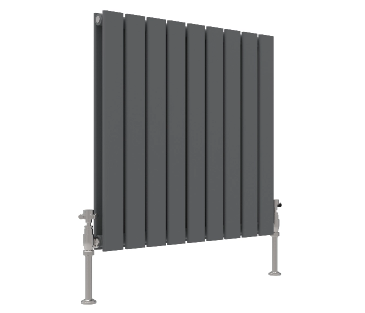
Central Heating radiators
Central heating radiators are the most common type found in homes across the UK. They’re connected to your home’s central heating system, usually powered by gas, oil, or a heat pump. When the system is turned on, hot water circulates through the radiator, releasing heat into the room.
Pros of Central Heating:
High heat output
Can heat the entire home simultaneously
Cost-effective if a central heating system is already in place
Cons of Central Heating:
Requires a central heating system including boiler, pipework, etc. Not as energy-efficient as electric radiators More complex installation process and regular maintenance
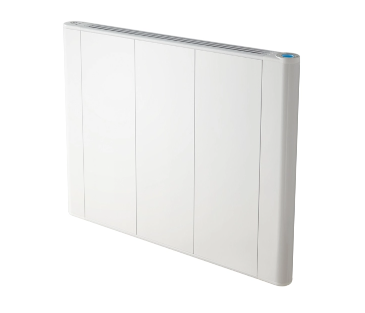
Electric Radiators
Electric radiators work independently of your central heating system. They’re plugged into an electrical socket and heat up internally using an electrical element. The heat is then radiated out into the room. Electric radiators are easier to install in locations where your plumbed central heating doesn’t currently run.
Pros of Electric Heating:
Easy to install
Can be used independently of a central heating system Energy-efficient as heat is not lost through pipes
Cons of Electric Heating:
Higher running costs due to the cost of electricity Doesn’t heat up as quickly as a central heating radiator Can be more expensive upfront
Different Types of Radiators
There are many types of radiators available in the market, each offering unique features, aesthetics, and benefits. Here, we explore the most common types available at Best Radiators.
Horizontal Radiators
Horizontal radiators are the classic and most common type of radiators in homes across the UK. Their design allows for efficient heat distribution, and they’re often installed under windows or on long walls to maximise this effect.
Pros Of Horizontal Radiators:
Efficient Heat Distribution: The horizontal layout of these radiators allows for a broad spread of heat across the room.
Versatility: They fit well in most room layouts and can be installed under windows or on any long wall.
Wide Range of Sizes and Styles: Horizontal radiators come in various sizes, styles, and finishes, ensuring you can find one that suits your room’s decor.
Horizontal Radiators
Space Requirement: These radiators require a good amount of wall length for installation, so they might not be ideal for rooms with limited wall space.
Placement: They are often placed under windows to combat cold drafts, but this might not always be the best location for heat distribution in some room layouts.
Vertical Radiators
Vertical radiators, also known as tall or upright radiators, are popular for modern interiors and spaces with limited wall length. They bring an element of style to your rooms while also providing a practical heating solution. There are plenty of designer vertical radiators to choose from.
Pros Of Vertical Radiators
Space-Saving Design: Their tall, slim design makes vertical radiators ideal for rooms with limited wall space. They can fit into narrow spaces where a horizontal radiator might not.
Stylish: Vertical radiators come in a wide range of designs and finishes, allowing you to make a statement in your room. They can add a modern, stylish look to your decor.
Ideal for High Ceilings: These radiators are particularly effective in rooms with high ceilings, as they distribute heat upwards.
Cons Of Vertical Radiators:
Heat Distribution: The heat distribution may not be as broad as that of a horizontal radiator. Because heat rises, the top of the room might get warmer faster than the lower areas.
Not for Large Rooms: Vertical radiators are efficient and stylish, but they might not provide sufficient heat for very large rooms due to their design.
Traditional Column
Traditional column radiators bring a touch of classic elegance to any room. These radiators, often made of cast iron or steel, feature a series of vertical columns through which hot water flows to heat your space.
Pros Of Traditional Column Radiators:
Aesthetic Appeal: With their vintage charm, these radiators can become a feature in a room, adding character and style to your decor.
High Heat Retention: Particularly with cast iron column radiators, the material retains heat for a long time, continuing to warm your room even after the heating has been switched off.
Variety: They come in various sizes and styles, from two-column to six-column designs, and in horizontal and vertical orientations.
Cons Of Traditional Column Radiators
Space: Traditional column radiators can be quite bulky, requiring more space for installation.
Heat Up Time: Especially for cast iron models, it takes longer for them to heat up fully compared to modern, aluminium or steel radiators.
Weight: The cast iron models can be very heavy, requiring sturdy walls for installation.
Heated Towel Rail
A heated towel rail is a versatile radiator type that serves a dual purpose: heating your bathroom and keeping your towels warm and dry. They come in various styles, sizes, and finishes, making them a popular choice for modern bathrooms.
Pros Of Heated Towel Rails
Dual Functionality: Heated towel rails keep your towels dry and warm while heating your bathroom. This can add a touch of luxury to your daily routine, particularly on cold mornings.
Variety of Styles: They come in numerous designs and finishes, including chrome, stainless steel, and even white or black. This makes it easier to find one that matches your bathroom decor.
Efficient: These radiators are typically very efficient, particularly in smaller spaces like bathrooms.
Cons Of Heated Towel Rails
Limited Heat Output: While perfect for smaller bathrooms, heated towel rails may not provide enough heat for larger bathrooms or other rooms in your home.
Not Suitable for All Rooms: While versatile, these are typically designed for bathrooms and may not fit the aesthetic of other rooms.
Designer Radiators
Designer radiators perfectly blend aesthetics with practicality, showcasing the harmony between style and functionality. Designer radiators are the epitome of form meeting function. They are crafted to heat your space effectively and enhance the aesthetic appeal of your rooms. These radiators are available in various styles, colours, and materials.
Pros Of Designer Radiators
Stylish: Designer radiators are the perfect way to make a statement in your decor. They come in a range of unique, often eye-catching designs.
Variety: With an extensive array of styles, sizes, and finishes, you can find a designer radiator to suit almost any interior design theme.
Flexibility: Many designer radiators offer flexible installation options, including both horizontal and vertical orientations.
Cons Of Designer Radiators
Price: The uniqueness and aesthetic appeal of designer radiators often come with a higher price tag compared to more standard models.
Heat Output: While many designer radiators are efficient heaters, some prioritise style over the heat output. Check the BTU rating to ensure it will adequately heat your space.
Space Requirement: Due to their unique shapes and designs, some designer radiators might require more space for installation.
How Many and What Size/Capacity
Radiator Do You Need?
Determining the right size and capacity of your radiator is crucial to ensuring that your rooms are adequately heated. Too small a radiator and you’ll struggle to reach a comfortable temperature; too large, and you may waste energy and money. Here’s how to calculate the number and size of radiators you need:

Calculate the Room’s BTU
The British Thermal Unit (BTU) measures heat output used in the radiator industry. To calculate the BTU requirement for a room, you’ll need to consider several factors, including the size of the room, the type of windows and insulation, and the number of outside walls. There are numerous online calculators available that will help you determine the BTU requirement for your room.

Choose your Radiators
Once you know your BTU requirement, you can look for radiators that meet this need. Radiator heat outputs are typically listed in BTUs, which should make the task easier. Remember that it’s better to overestimate your heating needs than underestimate them slightly.

Consider the Space
Other features that affect how well a space retains heat include whether it contains stairs or faces north, and how many external walls it has.

Multiple Radiators
In larger rooms, it might be more efficient to install multiple smaller radiators rather than one large one. This can help ensure even heat distribution throughout the room.
*Remember, this is just a guide. It’s always best to consult a heating professional to
ensure you choose the right radiators for your home.
Radiators for every room
Different rooms in your home have different heating requirements and design considerations.
At Best Radiators, our goal is to enhance your living experience by adding warmth, comfort, and style to every corner of your home. Whether you’re looking to upgrade your cosy bedroom retreat, the bustling heart of your kitchen, your serene bathroom oasis, or the inviting comfort of your living room, we have a heating solution tailored to your unique tastes and requirements.
Now, let’s explore the range of options available for the diverse spaces in your home.
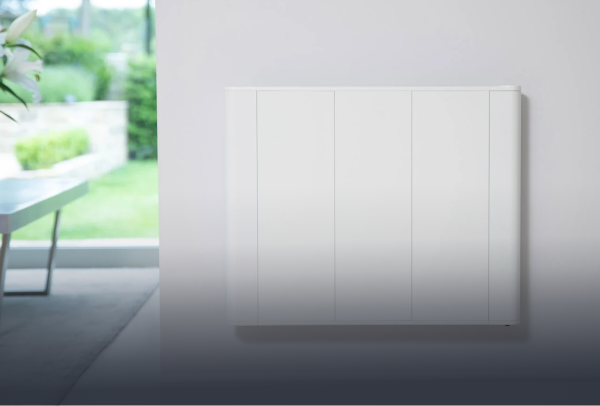
Bedroom
Choosing the right radiator for your bedroom is essential for creating a comfortable and inviting atmosphere. The bedroom is your personal retreat, a space where relaxation is paramount. Therefore, you want a radiator that not only ensures a warm and cosy environment but also complements your style and decor.
Vertical radiators can be an excellent choice for bedrooms as they provide ample heat without occupying too much wall space, leaving more room for your choice of furniture. If you’re selecting a radiator for a child’s room, consider opting for a low surface temperature radiator to ensure safety and prevent any accidental burns.
Radiator covers and cabinets can be used keep young children safe from hot radiators.
A radiator with good heat output and quiet operation is essential for bedrooms. Consider a double panel radiator for larger bedrooms or a stylish vertical radiator if wall space is limited.
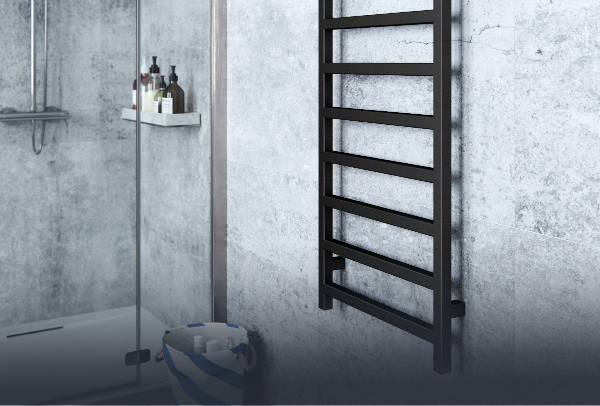
Bathroom
When it comes to heating your bathroom, functionality and style should go hand in hand. This is where heated towel rails or bathroom radiators come into play. These dual-function devices maintain a warm and cosy temperature in your bathroom and serve the practical role of warming and drying your towels.
Heated towel rails are available in various sizes and styles, making them suitable for both compact and spacious bathrooms. If your bathroom has a larger space, a designer radiator could be an ideal choice, adding a stylish statement and enhancing the overall aesthetics.
Regardless of size, remember that bathrooms often require a higher heat output due to their typically tiled surfaces and the presence of large mirrors. Hence, always ensure that your chosen radiator is sufficient for the space.
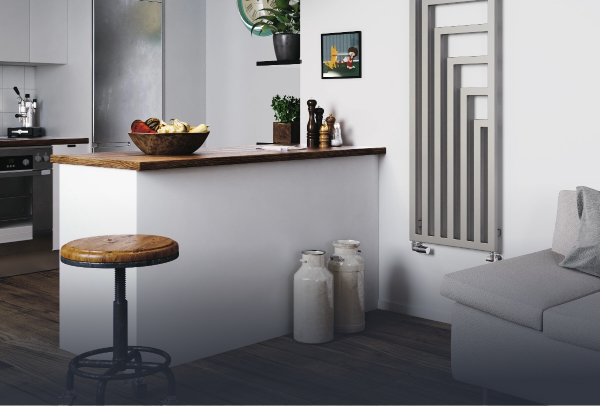
Kitchen
The kitchen is often the heart of a home, a place of warmth and bustling activity. However, due to cabinets and appliances, wall space can be quite limited, which is a key factor when choosing a radiator for your kitchen.
Vertical radiators are excellent for kitchens as they provide substantial heat without taking up much horizontal wall space. Alternatively, plinth heaters, which fit into the kick space below your cabinets, can be a great space-saving solution that doesn’t compromise on heat.
Designer radiators could also be considered for a touch of style and functionality. For example, a stainless-steel radiator adds a sleek, modern touch to your kitchen and is easy to clean and resistant to the high humidity often found in kitchens. Selecting the right radiator for your kitchen can add to its warmth and inviting atmosphere, making it an even more enjoyable space for cooking and gathering.
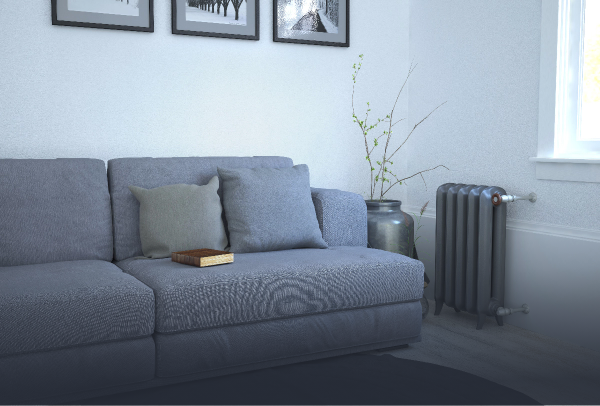
Living Room
Your living room is the communal heart of your home, a space where style meets comfort. Therefore, selecting the right radiator for this room is crucial to create a cosy environment and complementing your interior decor.
A large horizontal radiator is often suitable for living rooms, providing ample heat to cover the space. Traditional column radiators can also work well, adding a touch of classic elegance that pairs well with various decor styles.
If your living room features large windows, consider placing your radiator beneath them to counteract the colder air that can come through the window area. This will enhance the efficiency of your heating system.
Designer radiators could also be a great addition to your living room, serving as an eye-catching focal point that marries functionality with aesthetic appeal. Remember, the best radiator for your living room will balance your heating needs and style preferences, creating a warm and inviting space for relaxation and entertainment.
What Different Materials
Radiators Are Made Of?
The material of a radiator plays a vital role in its heat output, efficiency, and longevity. Each material has unique properties that influence how quickly the radiator heats up and cools down and how long it retains heat. Here’s a closer look at the different materials typically used in radiators:
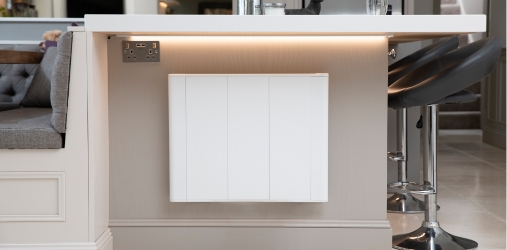
Aluminum Radiators
Aluminium radiators are known for their excellent thermal conductivity, meaning they heat up and cool down quickly. This makes them a highly efficient choice, as they can quickly respond to changes in your thermostat settings. They’re also lightweight, making them easier to install on walls. However, aluminium radiators do not retain heat as long as some other materials, which can be a downside if you want sustained warmth.

Mild Steel Radiators
Mild steel is a common radiator material due to its affordability and versatility. It offers good heat output and retention and can be moulded into various shapes and styles, making it a popular choice for designer radiators. However, mild steel is prone to corrosion if not properly maintained, so it’s important to ensure these radiators are appropriately treated and sealed.
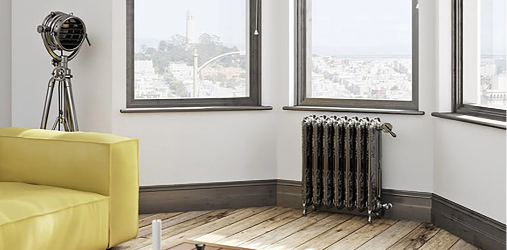
Cast Iron Radiators
Cast iron radiators are the traditional choice, often found in older buildings. They are known for their excellent heat retention—once a cast iron radiator heats up, it will stay warm for a long time, even after the heating system is turned off. This can be a great energy-saving feature. However, cast iron radiators are heavy, take longer to heat up and require more careful maintenance to prevent rust.
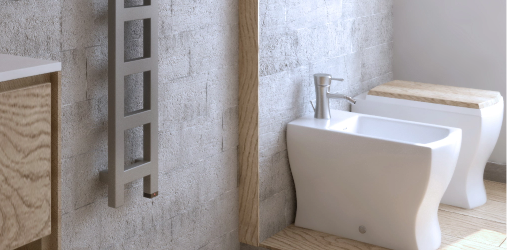
Stainless Steel Radiators
Stainless steel radiators are highly durable and corrosion-resistant, making them a great long-term investment. They also have a sleek, modern look that fits well with contemporary decor. Like aluminium, stainless steel is a good conductor of heat, but it also retains heat better than aluminium, providing a balance of quick heat-up time and sustained warmth.
Materials to avoid
While it’s less common, some radiators are made from less durable materials such as plastic or certain metals prone to rust and corrosion. These materials might offer short-term cost savings but often don’t stand up to the test of time, leading to more frequent replacements and potential additional costs. Remember, the best material for your radiator depends on your specific needs, including your budget, how quickly you want your room to heat up, and how long you want the heat to be retained.
Do I need Valves?
Absolutely! Radiator valves are essential components of your heating system, providing you with control over the heating in each room. There are two main types of radiator valves: manual and thermostatic, each with its unique features and benefits.
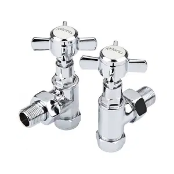
Manual Radiator Valves
These valves operate much like a tap, allowing you to manually regulate the flow of hot water into the radiator and thereby control the heat output. They’re a simple, straightforward option and generally less expensive than thermostatic valves. However, they require manual adjustment, meaning you’ll need to monitor and adjust them yourself to maintain your desired room temperature.
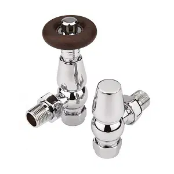
Thermostatic Radiator Valves (Trvs)
Thermostatic Radiator Valves offer a higher level of control over your heating. These valves automatically regulate the flow of water into the radiator based on the ambient room temperature. They’re designed to keep room temperature steady, reducing the need for manual adjustments and helping to save energy by preventing overheating. Due to their advanced features, TRVs are typically more expensive than manual valves, but they can provide long-term energy savings.
In addition to the type of valve, you also need to consider the following
when choosing your radiator valves:

Valve Style
In addition to the type of valve, you also need to consider the following when choosing your radiator valves:

Valve Orientation
Depending on your radiator and pipework setup, you’ll need to choose between straight, angled, or corner valves. Straight valves connect the radiator to the pipework in a straight line, perfect when your pipes come up from the floor directly into the radiator. Angled valves connect the pipework to the radiator at a 90-degree angle, ideal for when the pipes come out from the wall. Corner valves are designed to fit into a 90-degree corner, providing a neat finish when the pipework and the radiator valves are on the same wall.
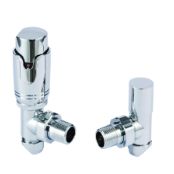
Lockshield Valve
This is the second valve found on a radiator used to balance the system by regulating water flow out of the radiator. Balancing your radiators ensures each unit receives an equal amount of hot water, thus ensuring each room is heated evenly.
In summary, while they might seem like small, insignificant parts of your heating system, radiator valves play a crucial role in controlling your comfort and energy usage. Therefore, choosing the right valves is an important part of creating an efficient, effective heating system.
FAQ’s
Choosing the right size radiator involves calculating your room’s BTU (British Thermal Unit) requirement, which depends on its size, the number of windows, and insulation levels. Online BTU calculators can be helpful here. Generally, larger rooms or poorly insulated spaces require radiators with higher BTU ratings.
There’s no standard radiator size in the UK because radiator size depends on the heating requirement of a room. However, typical horizontal radiators often have a height of around 600mm, with widths varying from 500mm to 3000mm, depending on the model and brand.
The surface temperature of a radiator can get up to 75-80°C. However, this can vary based on the type of radiator and the temperature setting of your heating system.
The cost of radiators can vary widely depending on the type, size, material, and brand. Basic models can start from as little as £50, while high-end designer models can cost over £1000. Remember to consider the running costs too, as more efficient radiators can save you money in the long run.
Type 11, 21, and 22 refer to the number of panels and convector fins in a radiator. Type 11 has one panel with no convector fins, Type 21 has two panels with one set of convector fins in between, and Type 22 has two panels with two sets of convector fins. The higher the type number, the higher the heat output.
The “best” type of radiator depends on your specific needs. For instance, for large rooms, a double-panel radiator might be best due to its high heat output. For smaller rooms or spaces with limited wall space, a vertical or single-panel radiator might be more suitable. If you’re after a stylish option, consider a designer radiator.
A “good” BTU for a radiator depends on the size and insulation level of the room it’s heating. A larger, poorly insulated room requires a radiator with a higher BTU, while a smaller, well-insulated room can make do with a lower BTU. A BTU calculator can help you determine the right BTU for your room.
There are more than three types of radiators. If we categorise them broadly, they can be classified into panel radiators (including single panel and double panel), column radiators (including traditional and modern styles), and designer radiators.
The difference between single and double radiators lies in their structure and heat output. Single radiators have one panel, making them slimmer and suitable for smaller spaces or rooms that don’t require much heat. Double radiators have two panels, offering a higher heat output and making them ideal for larger rooms.
The average lifespan of a radiator varies depending on its quality, the material it’s made from, and how well it’s maintained. However, a well-maintained radiator should last between 8 to 12 years and in some cases, even longer. Regular servicing can help extend the lifespan of your radiator.
Final Thoughts
Choosing the perfect radiator involves a careful evaluation of your heating needs, room size, radiator style, and budget. We hope this guide has given you a clear understanding of the different types of radiators, their heating mechanisms, and the factors to consider when purchasing.
Remember, the perfect radiator warms your space, complements your decor, and adheres to your budget.
Happy heating!

